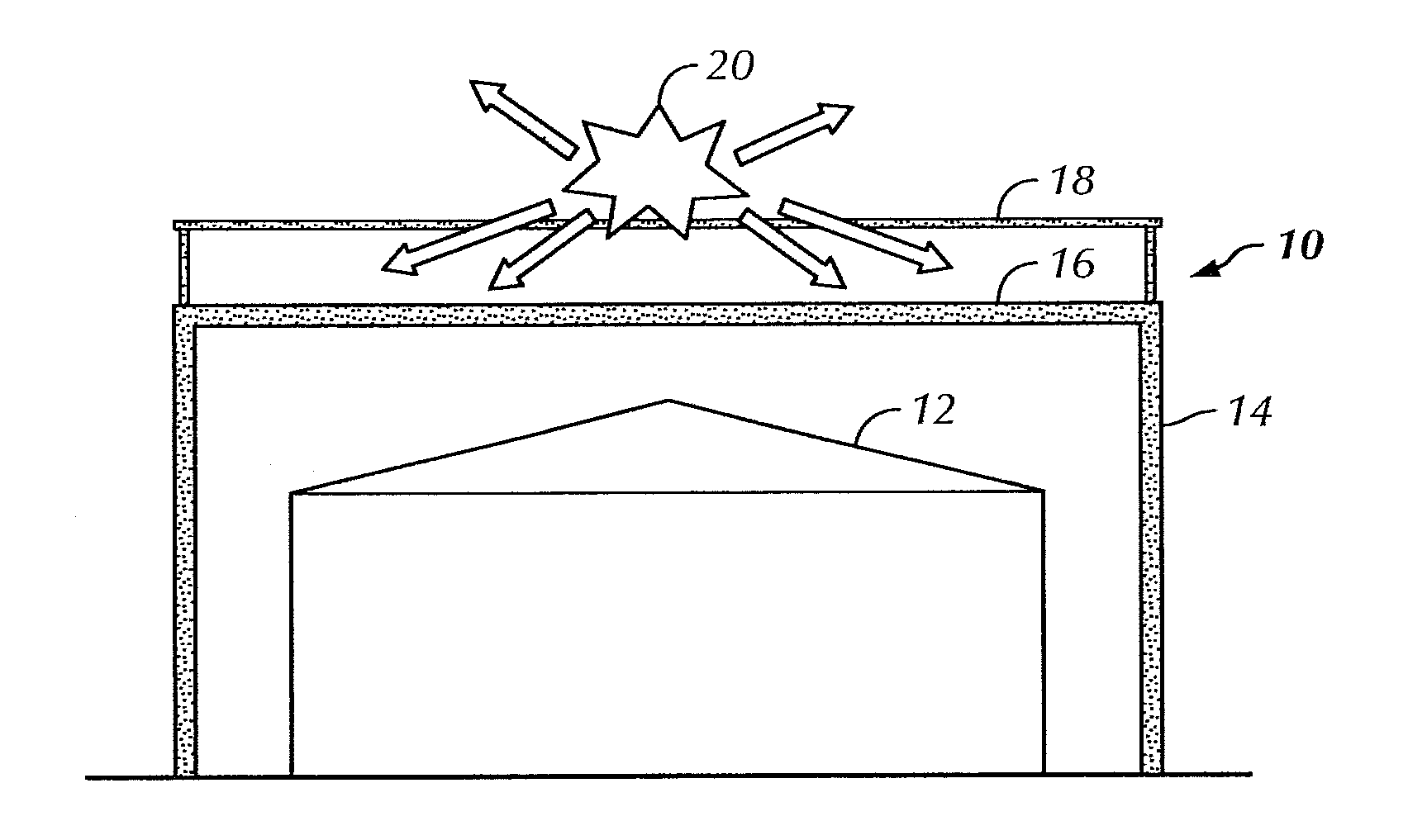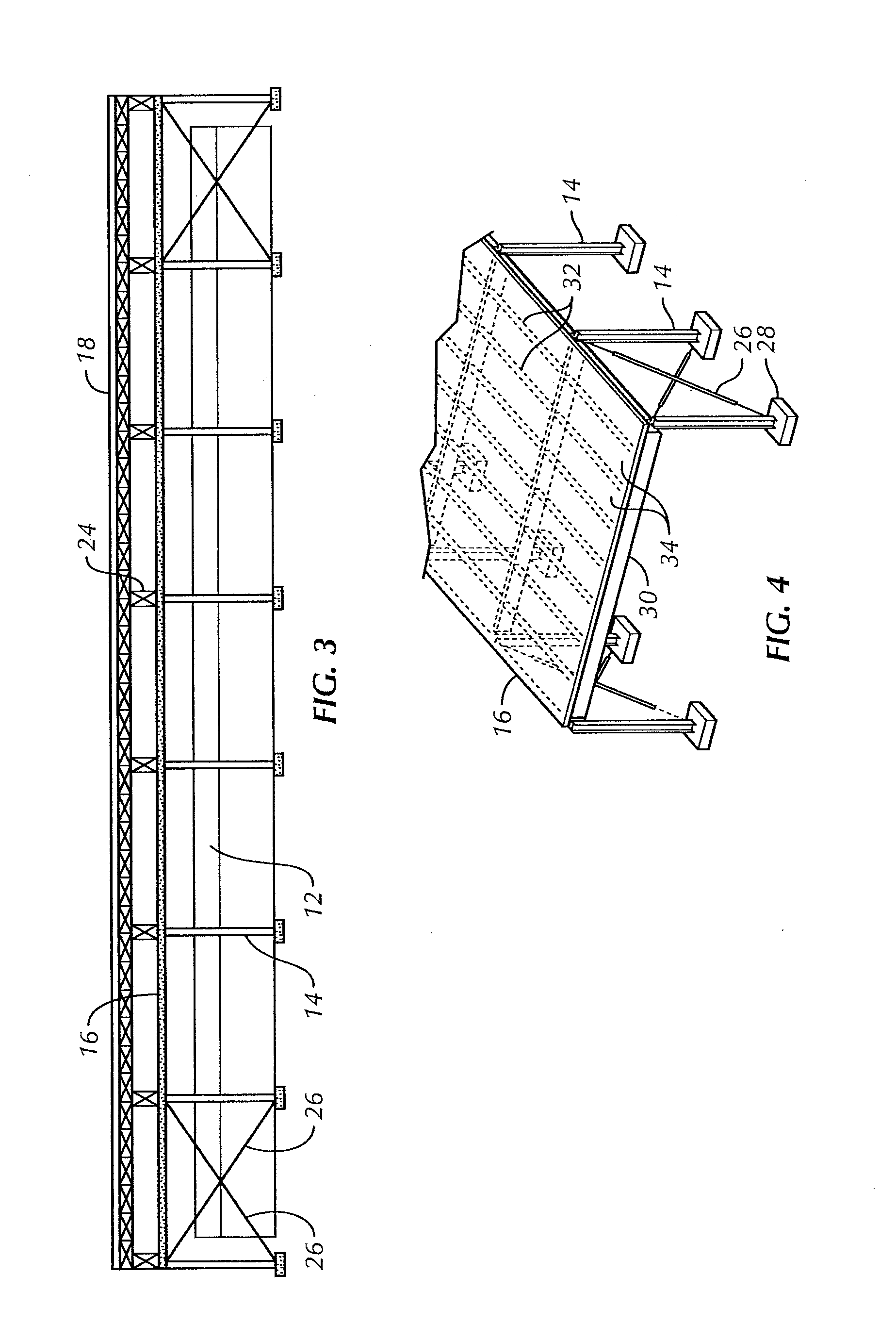Overhead protection system
- Summary
- Abstract
- Description
- Claims
- Application Information
AI Technical Summary
Benefits of technology
Problems solved by technology
Method used
Image
Examples
Embodiment Construction
[0019]Turning to the figures, the present invention can be best understood by starting with a functional diagram. In FIG. 1, a block diagram illustrates the basic structure and purpose of the present invention. A protective structure 10 is shown built around an existing, unhardened structure 12. A lower support frame 14 is shown supporting a blast cover 16 and burster screen 18. Incoming ordinance 20 is shown just making contact with the burster screen 18. This contact causes the ordinance 20 to detonate.
[0020]The burster screen 18 is positioned about 1-3 meters above the blast cover 16 in a preferred embodiment. The shrapnel, blast wave, and heat created by the detonation of the ordinance 20 dissipates somewhat before making contact with the blast cover 16. These destructive forces are deflected and absorbed by the blast cover 16, and the existing, unhardened structure 12, is thus protected from the incoming ordinance. The particular structural components of the preferred embodimen...
PUM
 Login to View More
Login to View More Abstract
Description
Claims
Application Information
 Login to View More
Login to View More - R&D
- Intellectual Property
- Life Sciences
- Materials
- Tech Scout
- Unparalleled Data Quality
- Higher Quality Content
- 60% Fewer Hallucinations
Browse by: Latest US Patents, China's latest patents, Technical Efficacy Thesaurus, Application Domain, Technology Topic, Popular Technical Reports.
© 2025 PatSnap. All rights reserved.Legal|Privacy policy|Modern Slavery Act Transparency Statement|Sitemap|About US| Contact US: help@patsnap.com



